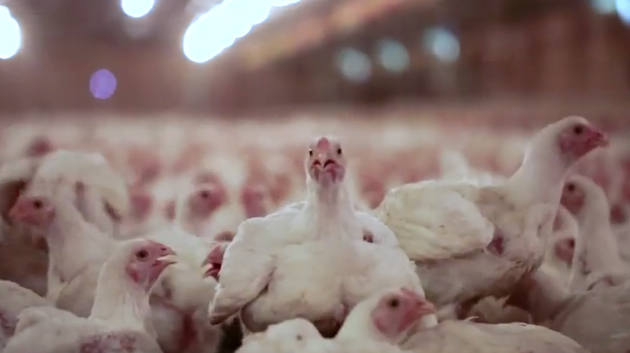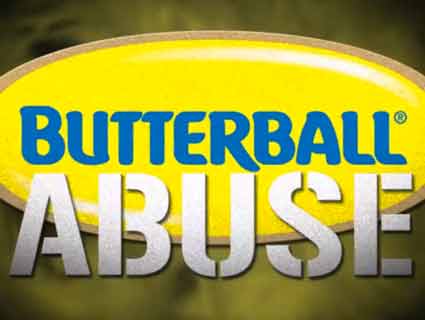Foster Farms, the West Coast’s largest chicken producer, places the “highest priority on animal welfare,” and has for more an 70 years, according to its website. Back in 2013, it even attained the American Humane Association seal. And so, how embarrassing for the poultry giant and its animal-welfare certifier that the animal-rights group Mercy for Animals has come out with the above eye-popping video documenting practices within a Foster Farm facilities in Fresno, California.
The video shows workers punching and slamming birds as they hang them upside-down into shackles ahead of slaughter, carelessly dumping bins of newborn chicks onto the ground as if they were stones, and committing other questionable and hard-to-watch acts. Voiced by retired game-show host Bob Barker, the video’s voiceover states that the “meat from these animals is sold bearing the American Humane Certified label…don’t buy that lie.”
For its part, Foster Farms is not casting doubt on the veracity of the footage, which Mercy for Animals attained by sneaking undercover investigators into the facilities disguised as workers. Here’s Foster Farms’ statement on the matter:
Foster Farms has been made aware of an online video showing company employees in Fresno, California, mishandling birds in their care. We have already begun a comprehensive investigation to determine the source and location, including a fully cooperative effort with all appropriate authorities. The behavior of the individuals in this video is inappropriate and counter to our stringent animal welfare standards, procedures and policies.
As for the American Humane Association, a spokesperson emailed the following statement:
We were made aware yesterday of a video that certainly seems to show inhumane treatment of animals. As an organization that exists to protect animals, abuse in any form is intolerable and unacceptable. The video was very surprising, as Foster Farms has worked hard to create a culture of humane treatment. In fact, they have never failed an audit in the three years we have been working with them.
He added that the “negative things being said about our program by MFA, which is a group that works to eliminate meat, dairy and eggs from American dinner tables, are false. Everything we do is for the benefit of the animals and we have a very strong and comprehensive program that helps give better lives to more than a billion animals.”
Both entities have had their share of bad press in recent years. In March 2013—coincidentally, the same month it won its American Humane Association approval—Foster Farms became embroiled in a 16-month-long antibiotic-resistant salmonella outbreak that sickened 634 people, of whom 38 percent needed to be hospitalized. That’s about twice the normal hospitalization rate for such an outbreak, reports the Washington Post, suggesting the salmonella strain was particularly virulent.
In the middle of that fiasco, in January 2014, the US Department of Agriculture’s inspection service saw fit to temporarily shut down a Foster Farms plant in Livingston, citing multiple “findings of egregious insanitary conditions related to a cockroach infestation in your facility.”
The American Humane Association, meanwhile, does not draw high marks for its welfare standards from Consumer Reports, which issues report cards on food labels. CR rates the American Humane Certified stamp “somewhat meaningful” and found that the label does require producers to follow basic standards: providing adequate food and clean water, and ensuring the animals are “free from pain and unnecessary stress.” However, it added, “many of the requirements in the American Humane standards mirror the conventional industry’s practices, and livestock producers do not have to meet all of the requirements to be certified.”
Meanwhile, the American Humane Association is most famous for certifying humane treatments standard for animals in Hollywood films—the famous “No Animals Were Harmed” statement you see as the credits roll. That program was the subject of a scathing 2013 Hollywood Reporter exposé alleging animal abuse and endangerment in several films and TV shows certified by the association.













